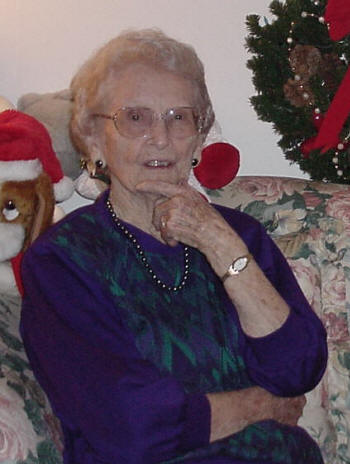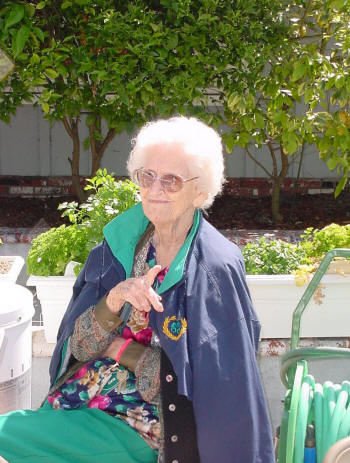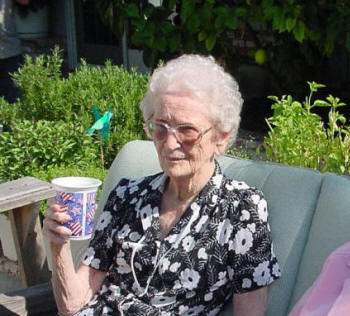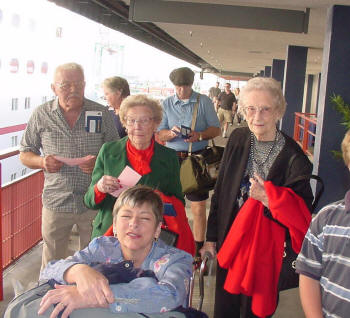Introduction
This section is about my Dad's parents, sisters and brothers. Dad's family came fromMcRae Arkansas just a little northeast of Little Rock. It was farming country and was considered the Strawberry Capital Of The World in the early 1900's.
It's my best guess that they came from North Carolina in an area now known as Lilesville, North Carolina . Lilesville is a town in Anson County, North Carolina, United States. The population was 536 at the 2010 census. A post office called Lilesville has been in operation since 1827. The town was named for an early merchant. My great grandfather, Amaziah Liles, came from North Carolina... Probably from Lilesville area.
The Liles family migrated west through Tenessee and finally into Arkansas which was considered "the wild west" in the 1890's.
As late as 1910, much of McRae and the surrounding area was sparsely settled woodland, and local commerce was restricted to sustenance farming, with many locals still dependent upon fishing and hunting to provide enough food.
Through this wilderness, the Cairo and Fulton had built its railroad, and, with access to distant markets, McRae and its neighbors joined the rest of Arkansas in its post–Civil War era timber production boom. Entrepreneurs from northern states quickly capitalized on the newly accessible woodlands, and two lumber companies were operating in and around McRae by 1895. Statewide lumber production peaked in 1909, but this was not the case with McRae, where the industry continued flourishing into the 1920s.
Cook, Bruce. The History of McRae, Arkansas. Searcy, AR: Harding Press, 1981
Dad's Parents
My Grandfather was Grover Clifton Liles (1884-1911) who died at the age of 24 just five years after Dad was born.

Grover Clifford Liles headstone
His father was Amaziah Liles (1812-1866) who was born in North Carolina and his mother was Jane Price Liles. Jane was born in 1814 and passed in White County September 16, 1859.
Amaziah came to White County in the 1830s with the Russell Price family; Married Jane Price Nov. 20 1837 in White County. Amaziah passed August 8th, 1866 and is buried in the Weir Cemetary in Searcy, White County, Arkansas.
This cemetery is located about 10 miles south of Searcy on Highway 267, in Section 10, Township 6 North, Range 8 West. Comprehensive records on burials here were prepared October 13, 1976, by Linda Rowe and Cloie Presley of the White County Historical Society and published in the 1987 White County Heritage.
Grover was one of eight children including James Columbus Liles, Russ Liles, Thomas Hiram Liles, Ella M. Liles Kirkland, Joseph Liles, Emma Dora Liles, and Cairla Green Liles).
He was the father of five:
Opal Allie Liles b: 09/18/1901 d: 01/06/1992 (Robinson) (Married James b: 6/4/1900 d: 04/19/1962 )
Alma Olive Liles b: 03/23/1904 d: 12/03/1987 (Mall) (Norman b: 11/22/1960 Indiana, d: 11/13/1901
Edith Agnus Liles b: 9/1/1908 d: 9 Sep 2005 (Claude Keathley Parchman) (Married Claude, b: 02/21/1909 d: 03/20/1976 at 67)
Wilbur Liles (1905, infant death)
Paul William Liles (1906 - 1970)
My Grandmother was Susie Liles who remarried after Grover passed and became Susie K. Essig. She was born 13 Jan 1882 and passed 27 Mar 1957. Grandpa Essign was born 7 May 1895 and passed 24 Jan 1982. Mary Cook Liles married Charles Essig and they had two children: Helen Strayhorn (Deceased) and Clarence Earl Essig (Deceased).
I remember Grandpa Essign well. Grandpa would come to California once a year via the train and I was always excited to go to the train station and await his arrival. He would stay a few weeks and then head back home.
Susie left this Earth when I was a mere 13 years of age so my memory of her is rotund lady with the worlds biggest smile.
My Four Aunts & One Uncle
Aunt Opal was the oldest born in 1901 in McRae Arkansas. She was married to Jimmy Robinson until he died in 1955. Aunt Opal has one child, Cousin Kat, who was 90+ years of age and was going strong until her heart gave out in 2012!
Aunt Alma spent many years in West Virginia and then moved to Los Angeles to be with the family after her husband died. She had three children but they were older than me by several years. After she moved to LA I got to know her when we visited Aunt Edith because she moved in with Aunt Edith and lived there until her death December 3rd 1987.
Aunt Edit was the youngest of the sisters and she just passed on this year (2005) after gracing our planet for 95 years! She was married to a childhood friend Claude Parchman born in Oklahoma February 21, 1909 and died March 1976) who passed on in the late 1970s. Edith had one child, my cousin, Claudia who is as old as me!
Finally we have Helen who was born to Susie and Charles Essig. Her husband was a Strayhorn and worked for an ice ream company for many years. I loved it when he would come home from work when we were on vacation because he always had an interesting flavor of ice cream and during the hot Arkansas summers that was fantastic!
Clarence Earl Essign was our black sheep of the family. In fact I never knew he was ever married until I began this "memory book". He would roll into town on the train, work well at the dime store but when he got paid, he disappeared and often Dad and I would drive to skid row in downtown LA looking for him. We found him, bring him home, and then put him on a train back to Arkansas. I have no idea to this day what he did in Arkansas. Each family is allowed one, right?
Dad's Side Of The Family Memories
Dad's "people" were located in Paramount California except for the grandparents and one sister who were still in Arkansas. We had a lot of contact with then seeing them almost every weekend one way or another.
It seemed to me everyone got along pretty well except for the occasional outburst from Opal (the matriarch of the family but Dad could trump her outbursts with one or two words! Dad really wore the pants in the extended family!
I had cousin Claudia who was my age (Edith's only child) and Kat (who was also my cousin but about 20 years my senior. She was always great.
The next few items are just random thoughts that come to mind when I think of Dad's family!
Croquet In The Front Yard
If croquet is a refined sport then I be refined. In Paramount where my Aunts were located, they had huge front yards so afternoon were spent playing croquet.

We had plenty of room!
Routlege's Handbook of Croquet, published in England in 1861, inspired a wave of popularity that swept right across the Atlantic. Croquet equipment was advertised in the New York Clipper in 1862 and two rulebooks were published in 1865. One of them was "Croquet as Played by the Newport Croquet Club," indicating that the sport was already a fixture in Newport's summer colony.
In 1867, a New York newspaper editorialized, "never in the history of outdoor sports in this country had any game achieved so sudden a popularity with both sexes, but especially with the ladies, as Croquet has."
During the early part of the century, croquet became the dominant form of the sport. A new governing body, the American Croquet League, was founded in 1916, while the NCA became dormant for many years.
Lawn croquet made something of a comeback during the 1920s, at least among wealthy people playing on large, well-leveled lawns at estates on Long Island and in Hollywood, the two major hot beds. Croquet was frequently mentioned in Broadway and movie gossip columns because of the names involved. Among its well-known players were Harpo Marx, George S. Kaufman and Moss Hart of Broadway fame, Hollywood producers Sam Goldwyn, Howard Hawks, and Darryl Zanuck, and composer Richard Rodgers--all of whom, not so incidentally, are now in the Croquet Hall of Fame.
After World War II, croquet achieved a different kind of popularity as a middle-class, backyard game for all ages, often played under rules invented on the spur of the moment. This new popularity led to the reorganization of the NCA and a new standardization of rules--although that standardization didn't necessarily reach into most of those middle-class backyards
Cutting Hair in The Back Year Under The Big Tree
I will never understand how the ladies knew it was time to cut hair but they would decide it was time and head for the "big tree" with a bags full of combs and scissors and many chemicals.
Did you know? - A permanent wave, commonly called a perm, is the chemical and/or thermal treatment of hair to produce waves, curls or straight hair. The use of the word 'permanent' is justified insofar as when the wave is permed, it remains so; however, as the hair grows, the new hair that grows has not been waved, while cutting the hair from the end removes that which is waved, giving the impression that the permanent wave gradually disappears. In cosmetology, it is termed a type of curl reformation.
They would chat for what seemed hours and cut each other's hair and put all sorts of stuff on their hair. As a kid all I remember was that it smelled horrible.
Us men would go into the house away from the fumes and watch TV or listen to the radio as sports was always on.
I remember the tree then and I remember it now. It was about 26 feet tall then and over 75 feet now!
This hair cutting time wasn't all bad. It gave the "men folks" time to listen to the ballgame on the radio in the house or in the front yard.
I do remember the soft breezes moving though the big trees on the property. Sometimes I can also hear the wind and see the ladies gathered together chatting away.
I was always terrified that they would call me over and give me a haircut so I kept my distance!
Football Sundays Before There Was TV
I remember going over to Paramount and the men would gather in one of the tiny houses or sometimes under the tree in the backyard and listen to the radio announcer broadcast the "big game" of the weekend. It's too bad kids of today do not get to "visualize" and see as the radio announcer talks. We could all be in the middle of a snowstorm while sitting under the tree.
It's funny as none of my uncles were "drinkrs"... An occasional beer perhaps but they listened for hours with ice tea or sometimes a coke!
Of course as the game progressed the ladies would bring out food and place on the table for the guys to munch on... Those were the days... Endless upplies of excellent dishes.
The aunts and uncles didn't have TV's until about 1955 so if it was a "big" game, everybody would come to our house on Comey Avenue to sit in front of the little 17" tube and watch the big event.
If they were alnve today what would they think of a 70" 4K flat screen with around-sound and the camera and computer assisted announcers? Wonderful!
They would also probably turn it off if the NFL allowed the "kneelers" as my family were devout patriots.
Gracie Moore Our Friend
Grace Moore and Kat Robinson met in the 1950's and became lifelong friends. Kat taught Grace the dental hygeine trade and they worked together and lived together for many years only separating after Jimmy passed and Kat went to help her mother.
Even then Grace rented the back house and she was like another cousin to me. In recent years, Grace developed altzheimers and moved to Apple Valley to be close to family. She recently passed away of the disease.
Until the last, Sue would call Grave when we were at Kat's place and have them communicate. Both had stages of Altzheimer's but they did recognize each others voice!
Concord Grapes On The Garage
Down the side of the garage at aunt Opals house was a wild concord grape plant which grew to cover the entire top of the garage. In the late summertime my mother and aunt Opal would go up on the garage and pick the grapes (because the roof was not strong enough to hold any men).
We would eat grapes all the way home. The would be wearing their aprons and gathering the large clusters of grapes. They would move toward the edge of the garage and hand the grapes off to the men who carefully watched what was going on. I can still taste them today!
Cranking The Old Iron Ice Cream Maker
It's summetikme and that means ice cream the old fashioned way! My cousin Claudia and other cousins would join the "fun" all taking our turns cranking and cranking until it was difficult to turn.

The cast iron crank and gears would last forever!
If that machine were tied to a car it would have gone 90 miles an hour! Every summer weekend when we visited the aunts (and that was most weekends) the ice cream maker would come out, Dad would go to the ice house and get ice and salt, and off we would go!
Once it was hard to turn we knew that ice cream was about an hour away... We had to pack the entire bucket in ice and let it sit I order to set up.
The melted water with all the ice would go into the ground down the driveway but it never seemed to bother the plants and maybe made the concord grapes even better than normal.
I remember this ice cream capable of delivering a brain freeze faster than any other ice cream I ever had.
Poor Old Kat
Poor old Kat, at least that's what she says these days. Kat was born in 1922 to Opal and Jimmy Robinson and for whatever reason, she was never married and became a fixture at her house.
After Dad passed, Mom took Kat and Aunt Kaye to Europe with her as Kat had never been out of the country or even to many of the places in the US pelople normally see.
My father and mother always loved Kat and explained to me it was my responsibility to take care of her when he (Dad) left as her parents took care of Mom and Dad when they came to California in the 1930's. I always wondered how I could do it before I married Sue but them it because easy. Sue and Kay got along amazingly well! So Sue and I continued to take care of Kat until her death.
In fact, Sue and I took Kat and Aunt Edith to the Carribbean and also through the Panama Canal with us! We had a load of fun as these two were wonderful traveling companions!
Sue and I had to move her from her home into an Adult Assisted Living Facility as she could no longer care for herself. Kat lived in Garden Grove and finally passed in 2011. We would go to the facility every week and take her out and about. She loved the zoo and like to out to eat. We took her to Catalina and many other places.
It was amazing because as the Altzheimer's disease progressed she lost me (ie. didn't recognze me any more) but she knew Sue until the last days of her life. Says a lot for my bride!
Kat's New Ford Crown Victoria
Kat was proud of that Crown Vic! I remember driving all the way out just to see the new car. It was the first car she ever owned and she picked it out herself even though her dad, Jimmy, got mad because it was a Ford and not a Chevy
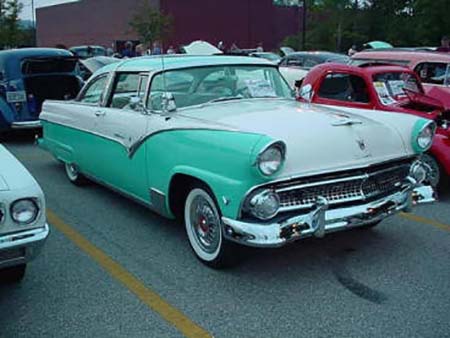
Uncle Claude (Edith's husband) and Dad told Jimmy to be quiet and let her enjoy her car. It almost caused a family feud but Jimmy came around and let the Ford stay!
It was a beautiful car which Kat drove around for years and years polishing the paint and chrome every few days!
I never understood, until I got to be around Opal and Kat when I was remarried, how horrible Kat's parents were to her. I finally understood why Kat never got married and why she thought so little of herself. If Opan and Jummy would have treated her better she would have had an amazing life because she was so smart and talented.
After her passing, Sue and I had to go through her "stuf" and we found her writings that she never shared and sometime I hope to publish them... She had a real knack for writing.
The New House Goes Up From A Kit
The little house was.... just too little. Remember it was about the size of a garage. Time to move up to a 900 square foot place and what better way to do it than a kit!
I can remember the new house going up... Every week we would go out to Paramount from West Los Angeles (remember, no freeways yet) and see the progress. I loved taking the sawed off 2x4's home to make things!
It took a few months but the house was ready to live in. Jimmy and Opal were so proud of the place. I dod not know until many many years later that dad had loaned them the money on a note so they could buy the kit and get it put together. I guess that was a small way to pay tem back for takikng care of Mom and Dad when the came from Arkansas in the 1930's.
Shuffleboard In The Driveway
While growing up I remember that on Thanksgiving, we used to go to Aunt Opals house. Her little house was probably 800 square feet and was built in the 1920's. The house still stands today and is used as a rental house for my cousin.
The house was on a lot that was about 100 x 600 so there was plenty of front yard. The front yard was croquet land sometimes and sometimes it was a large garden!
Most memorable is the fact the women would go into that super small kitchen and cook all morning while the men would sit outside. No, there was no TV but they did listen to the radio!
When the turkey went in, the ice cream makers were pulled out, filled up and started. We usually had two and sometimes three ice cream makers going.
The long driveway was perfect for shuffle board. The lines were painted in and away we go. Eevry weekend wa shuffleboard time!
Seal Beach Submarine Net Floats
Naval Weapons Station Seal Beach was commissioned in 1944, at the height of World War Two, as a Naval Ammunition and Net Depot. The base at that time had two primary missions: Storage and loading of ammunition onto Pacific Fleet ships bound for the war, and servicing the anti-submarine nets used to protect fleet bases and anchorages around the world.
The Depot was built next to the seaside community of Seal Beach, located on the northwest corner of Orange County, California. Seal Beach was considered an ideal site due to both a large amount of available open space for weapons storage, and the area's proximity to the navy fleet concentrations in Long Beach and San Diego.

There were thousands of floats... Some round and some like tanks!
The function of these nets were to block Submarine attacks. A Submarine Net had to either block submarines attempting to enter a port or, if they burst through the net, cause their immediate destruction by revealing them to net Patrol Craft.
This was the heaviest, most massive net used. It was installed at major bases and ports where concentration of merchant shipping and probability of attack justified the necessarily heavy expenditure of material required in constructing this type of net. This type of net properly installed and maintained provided the highest degree of security from submarine attack essential for a major fleet base where otherwise ships would be particularly vulnerable.
It was in effect, a wire fence securely attached to the ground and equipped with a closely guarded gate. The fence, that was the net proper, was suspended from buoys floating on the surface which in turn were secured at intervals by chains running from Mark II buoys to heavy anchors on the bottom. The gate was a net which could be opened to let friendly ships pass through. It was operated by a barge type vessel called a Net Gate Vessel (Designated YNG).
The Submarine Net was constructed with diagonal mesh in lengths called PANELS, measuring 300 feet. Nets were tailored to fit the depth of the water where they were to be installed and had to reach the bottom without excessive width which would foul the bottom and possibly impair the functioning of the net under attack.
Sunday Drives
In the late 40s and in the 50s, our family would jump in the car and go for a Sunday Drive. Could be an hour, our could be the entire day. Generally we would point the car down the road and see where it led.
I guess this was an event that had gone on for 20 years prior to me arriving. I remember Otis and Dad telling me about the day they went into the forest up around Big Bear on a Sunday drive and had to back up almost 12 miles because there was no place to turn around!
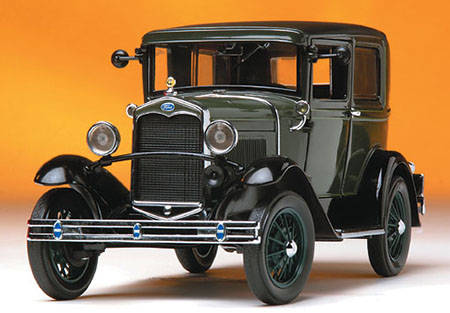
Time for a Sunday drive!
We went to the beach, mountains, desert, San Diego, Palm Springs, almost anywhere in Southern California.
Gas was 9 cents a gallon and cars got good mileage!
Thanksgiving In The Little House
In the late forties and throughout the fifties, my family went to Aunt Opals for Thanksgiving. Aunt Opal and Uncle Jim lived in a tiny house in Paramount, California. The neatest thing was that they lived next door to Aunt Edith and Uncle Claude who also had a tiny home. Tiny means about the size of a modern two car garage... Maybe 500 square feet.
My family was from Arkansas and Oklahoma. They came to California in the early thirties because of the conditions being so bad in the South.
Aunt Opal and Uncle Jim came first and settled in Paramount. The properly was wide open in those days. No sidewalks or curbs, the yard went to the street.
Their houses were on deep lots so we have a front yard about 100 feet deep and 100 feet wide. Until the mid fifties, when they both built new houses in the front yard, they yards had vegetable gardens out front we still had plenty room for playing.
The little houses was filled with family and if my memory serves me, the ladies stayed in the kitchen and cooked up a storm while the guys sat outside under the trees and listened to the football game. We didn't have TV's yet. By the mid fifties, we had little black and white TVs, a real improvement.
My cousin Claudia (my age) and I would sneak into the kitchens and grab olives and other goodies and sometimes we were full by the time dinner was served. Full except for the room we keep for the homemade ice cream!
The food that came out of that tiny little kitchen was amazing. Sometimes I can still smell the aroma of those beautiful turkeys and hams and green beans and mashed potatoes. We started eating about one o'clock and ate the rest of the day.
By late in the afternoon, all the guys were taking naps under the trees (probably trying to avoid clean up duties! I remember a fair amount of beer going down but these folks never got tipsy.
I remember grace being said and people joining hands around the table. Oh, the table was always outside on the driveway. It was the only place we could all sit down together. I always sat with the kids until I got to be ten and then I was promoted to the big peoples table. That was a major milestone in my life.
While growing up I remember that on Thanksgiving, we used to go to Aunt Opals house. Her little house was probably 800 square feet and was built in the 1920's. The house still stands today and is used as a rental house for my cousin.
The house was on a lot that was about 70 x 600 so there was plenty of front yard. The front yard was croquet land sometimes and sometimes it was a large garden!
Most memorable is the fact the women would go into that super small kitchen and cook all morning while the men would sit outside. No, there was no TV but they did listen to the radio! When the turkey went in, the ice cream makers were pulled out, filled up and started. We usually had two and sometimes three ice cream makers going.
Walking To The Little Store
Claudia and I would go around the corner to the little grocery store.... I mean small about the size of a garage. We would have ten cents and it was burning a hole in our pockets!
Damned Red Ants!
Paramount was on top of the worlds largest red ant colony.. Just ask my feet!
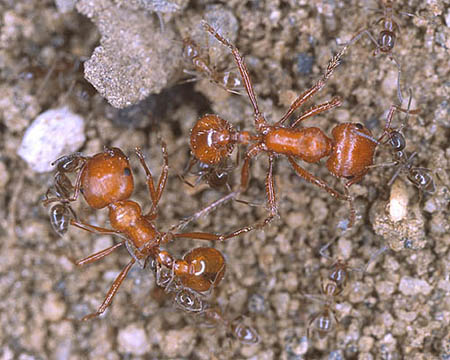
Aunt Edith (1911-2005)
It is with great sadness that Aunt Edith Parchman passed on September 9th, 2005. She was a "Great Aunt" and a friend of our family. Here are a few of the snapshots of her at different family events over the past severalyears. Born in McRae Arkansas January 19th 1911 she graced us for 34,657 days bringing happiness and wit to all.
Funny Stories Time
Funny story time...
On A Cruise - Edit, Kat, Sue and I go to the Caribbean on CRUISE SHIP during Dodger Season. But we can't get the scores easily so Aunt Edith gets to know the crew and by the second day, every time we walked on deck some crew member would give her the score update!
She was invited to the radio room to listen to shortwave radio, In the evenings at diner the waiter would pass he a slip of paper with the scores on it!
We Lost Them - Aunt Edit, Kat, Sue and I went to Santa Catalina for Halloween. We went on Friday night and stayed over night to go to the masquerade ball at the Casino. We decided to meet in the lobby of our hotel, in costume, and walk to the Casino. Sue and I and Kat meet and begin to talk.
No one else is in the lobby except a Mexican lady with deep black hair, comb in he hair and a red dress. She was reading the newspaper. So, Sue and I are off again to find "E". We check he room, no "E". We walk the halls thinking she got lost, no "E". We walk around outside, no "E".
We lost her. When we approached the front desk clerk to complain "We lost our aunt", "E" drops the newspaper and yells "SURPRISE!". WE were surprised; flabbergasted; amazed; and all the other emotions! She had bee sitting three feet from us the whole time and we did not recognize her! "E" has a good laugh on us!
Christmas time and the Christmas Play was a tradition for the family. For many many years, Kat and Edith would join us for the play... Always bringing smiles and stories of Christmas for the family!
So we arrive in Ensenada, Mexico the next morning and all plan to get off the ship a visit Ensenada except Aunt Edith, Kat, Sue and Paul.
We have a little bite for breakfast and then sit back and enjoy the rest.
Around 10:00 am, Sue and Paul decide to find Kat and "E" and go to an on-board activity.
No Kat! No "E"! We searched the ship top to bottom. Claudia is going to shoot us, we lost her Mom!
Finally, we are going to the Captain to report the missing ladies and we see, out of the corner of our eye, Kat and "E" walking up the gang plank carrying shopping bags and wearing sombrero's!"
I was dreading having to call cousin Claudia and say "I lost your mother in Mexico".
WHERE HAVE YOU BEEN???", we yelled!! Aunt Edith says, "Oh, we decided to go shopping so we caught a cab and bought a new purse and these hats!
Uncle Claude's Garage
I was always ready to go with Uncle Claude into his magic huge garage with all those machines and inventions underway! It was a boys fantasy land. Claudia probably never appreciated the magic that came from that garage but I did!
Manchester Boulevard
What memories of driving the 30 or so miles from West LA to Paramount. We would take Inglewood Boulevard and then catch Manchester for the rest of the journey. No traffic in those days! It was 40 years later and after Mom and Dad were gone that the 105 made it easy. We finally took the LB freeway.

